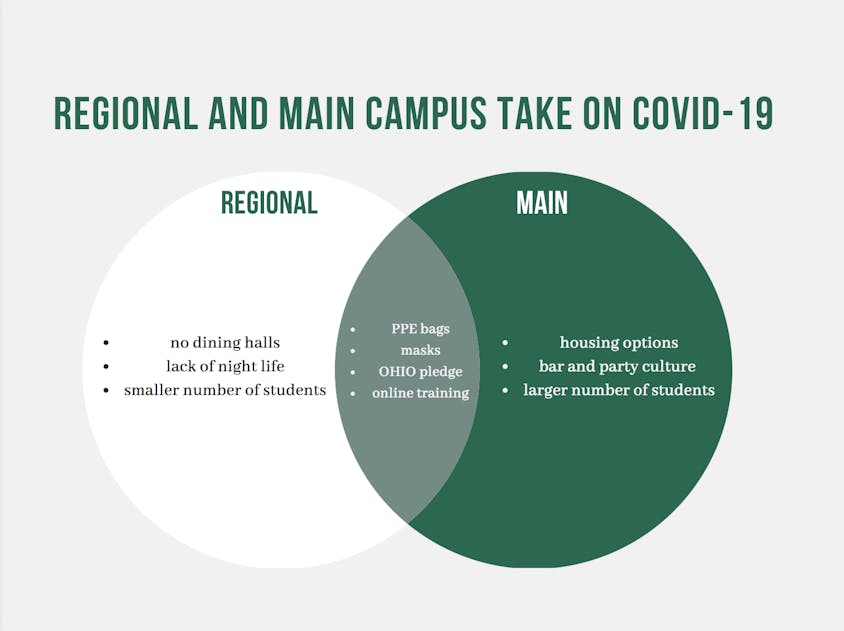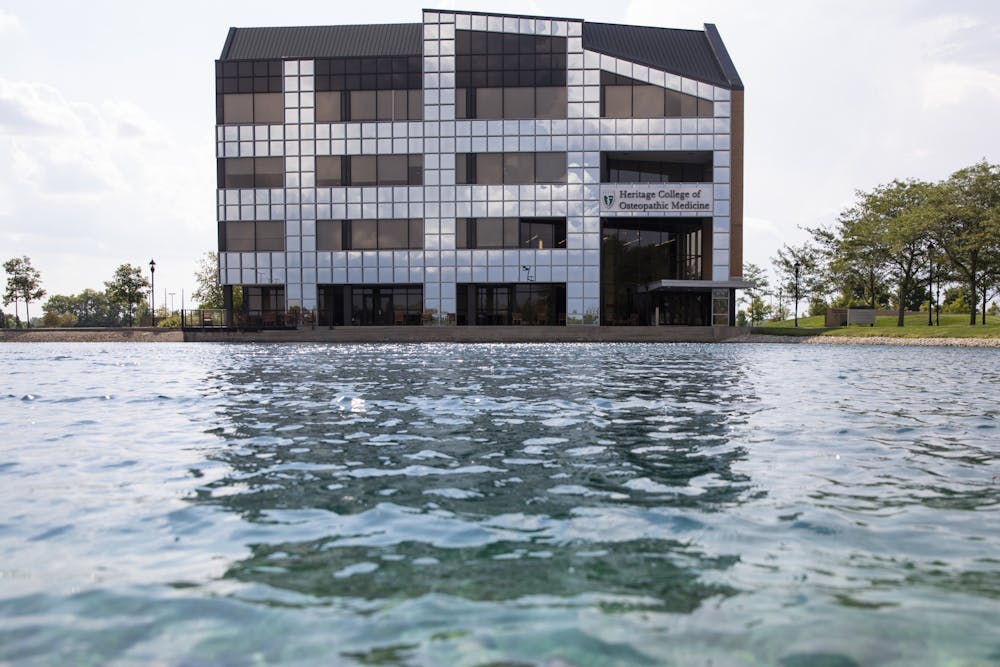Abbey Martin, a freshman studying undecided sciences at Ohio University’s Southern campus, knows first-hand the effects of COVID-19. Her mother tested positive after a coworker leaned over the desk and said she was sick.
“Well, it was pretty unfair because we did everything we could to prevent any of us from getting COVID,” Martin said. “We wore our masks, we washed our hands, we disinfected everything. But it was just like one little mistake…”
Although the rest of the family tested negative, Martin and her sister had to quarantine in their bedrooms with exceptions like the bathroom and food.
“We couldn’t have any contact with mom and we had to wear masks outside of our bedroom,” Martin said.
Martin feels that Southern has been great with communication relating to the pandemic.
“We are informed about everything,” Martin said. “Anything that is coming up or something that we can't do, they’ll let us know in advance. They sent us preparation videos and we had to take a preparation course in order to stay safe and to help prevent us from catching COVID.”
Ohio University’s main and regional campuses are handing out personal protective equipment (PPE) bags to help students be safe.
According to the press release, the bags, which include hand sanitizer, two branded masks and a digital thermometer, are available to students returning in the first or second phases this fall. One bag is available for each student. A student ID is required to pick up the bags.
“Our regional campuses, which do not have on-campus housing, began fall semester 2020 with a hybrid approach,” Carly Leatherwood, a university spokesperson, said in an email. “In an effort to reduce density, we are offering face-to-face instruction only for clinical, practical, or lab-based classes at all regional campuses. All other courses will be offered through remote instruction. Clinical, practical, and lab-based classes that do remain in person will be small, ensure social distancing, and face coverings will be required for all faculty, staff and students on all campuses. Our plan on regional campuses will remain the same throughout fall semester.”
Martin has three hybrid classes and two online classes. As of now, all of her classes are online, but the hybrid classes may be face-to-face in the future.
There are slight differences between the main campus and regional campus, however both require the same preventive measures. All campuses are required to do the online training module and the OHIO pledge. All students and faculty are required to do a symptom check before coming to campus. Additionally, all campuses have access and are encouraged to call the Ohio University COVID-19 response hotline at 877-OU-COV19 (877-682-6819), Carly Leatherwood said.

Leatherwood said the main difference is that the main campus has housing. Students who live in dorms and off-campus housing are at-risk for exposure and to combat that, Ohio University implemented the phased move-in.
President Nellis issued an interim policy, which details requirements that all students must comply with, including doing a symptom check before coming on campus, limiting social gatherings and participating in contact tracing.
Martin is passionate about preventing the spread of disease.
“COVID-19 is not a joke by any means,” Martin said. “I watched my mom suffer from it for two weeks and she is still suffering from post-COVID. Take every precaution you can and treat it seriously, it’s nothing I would wish on anyone.”






